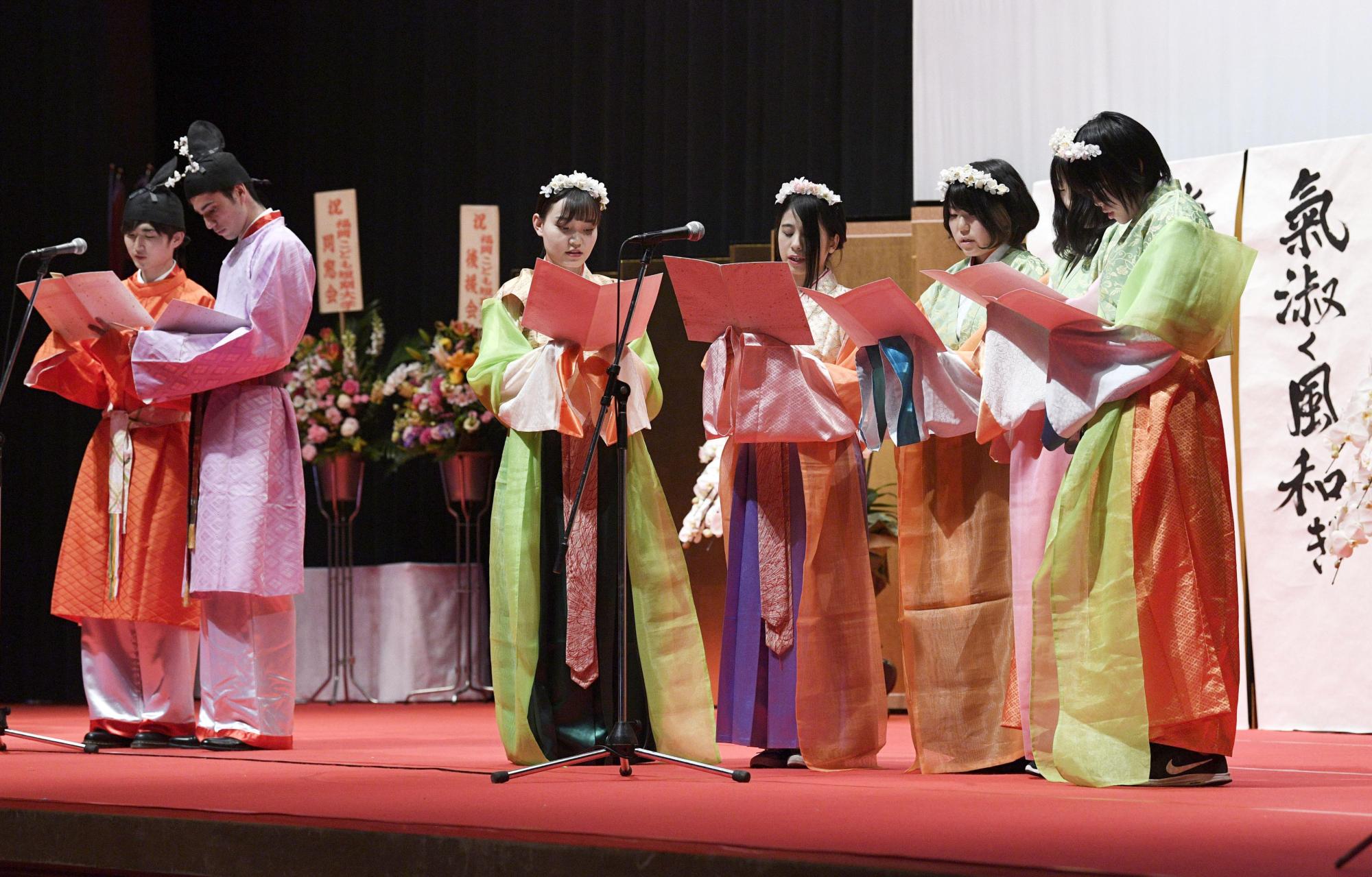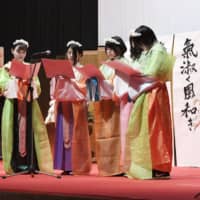An exhibition exploring the origins of Reiwa, the name selected for the forthcoming era, opened Tuesday at a museum in Fukuoka Prefecture, where poems about plum blossom viewing that inspired the era name are said to have been written.
The event, which runs through June 9 at the Kyushu Historical Museum in the city of Ogori, showcases numerous artifacts and poetry that connect Reiwa with the city of Dazaifu in Fukuoka, where a plum blossom viewing party was organized in the year 730 by court noble and poet Otomo no Tabito (665-731).
Reiwa, which means "beautiful harmony" and is set to begin on May 1 following an Imperial succession, originates from a line about a pleasant breeze and plum blossoms in "Manyoshu," Japan's oldest poetry anthology, which dates back more than 1,200 years.
The line, written by an unnamed individual, was taken from the introduction to 32 poems, including a piece by Otomo no Tabito composed at the party held at his residence in Dazaifu.
The items on display at the museum include clay pots and accessories used to adorn obi — the sash for kimono — that were unearthed from the site where Otomo no Tabito's residence is thought to have been located.
Replicas of the fifth volume of "Manyoshu" containing the poems that inspired Reiwa are showcased together with commentary, as well as volumes 17 and 19, which include works composed by Tabito's eldest son, Otomo no Yakamochi, a representative poet of the anthology that he is said to have compiled.
On April 29, the museum will organize a lecture on the lives of Otomo no Tabito and Yakamochi in Dazaifu through the lens of "Manyoshu" poems.
"I would like visitors to immerse themselves in the world of Manyoshu and feel familiar with the new era name," said curator Hirokazu Matsukawa.




